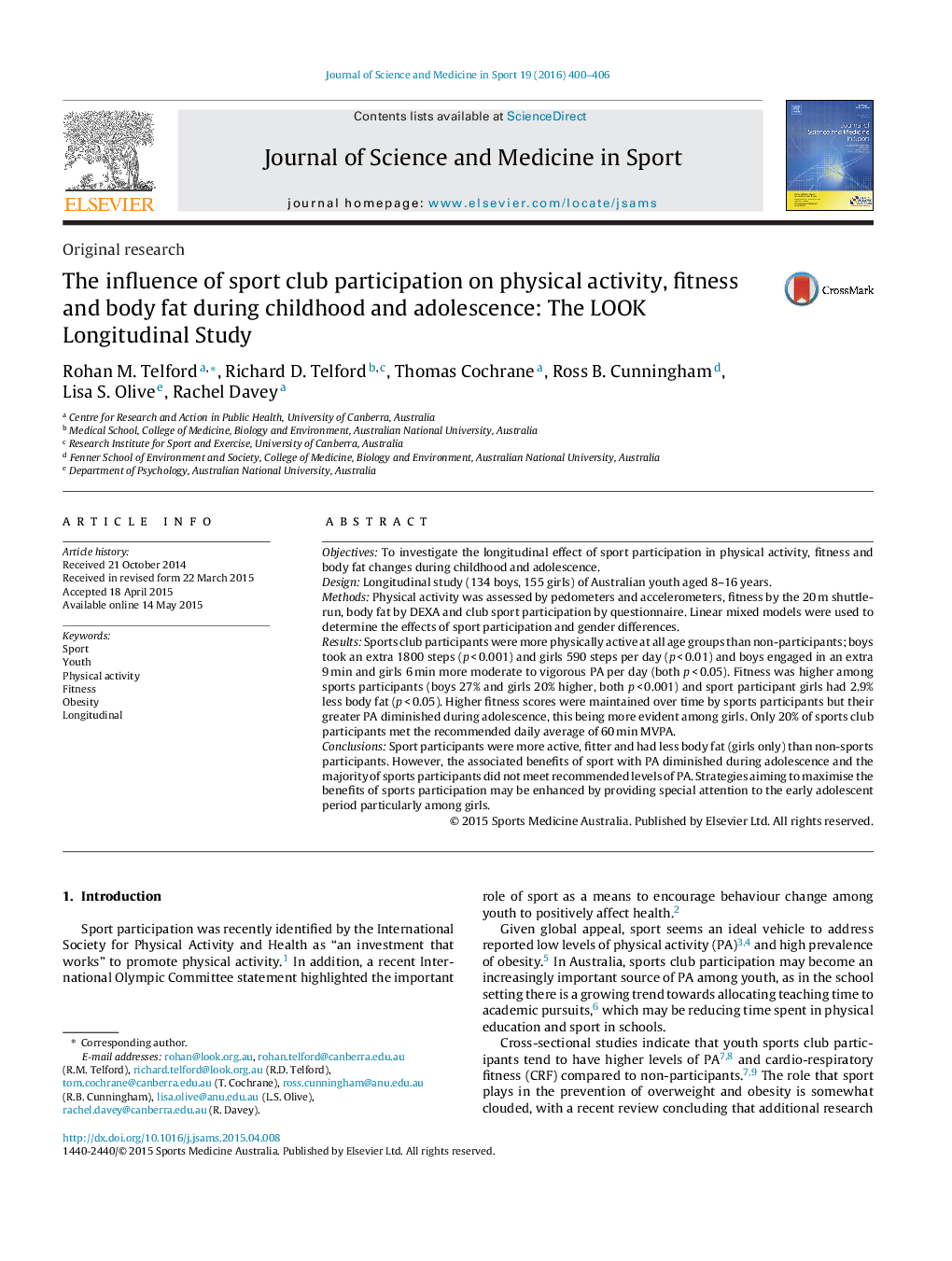| Article ID | Journal | Published Year | Pages | File Type |
|---|---|---|---|---|
| 2700544 | Journal of Science and Medicine in Sport | 2016 | 7 Pages |
ObjectivesTo investigate the longitudinal effect of sport participation in physical activity, fitness and body fat changes during childhood and adolescence.DesignLongitudinal study (134 boys, 155 girls) of Australian youth aged 8–16 years.MethodsPhysical activity was assessed by pedometers and accelerometers, fitness by the 20 m shuttle-run, body fat by DEXA and club sport participation by questionnaire. Linear mixed models were used to determine the effects of sport participation and gender differences.ResultsSports club participants were more physically active at all age groups than non-participants; boys took an extra 1800 steps (p < 0.001) and girls 590 steps per day (p < 0.01) and boys engaged in an extra 9 min and girls 6 min more moderate to vigorous PA per day (both p < 0.05). Fitness was higher among sports participants (boys 27% and girls 20% higher, both p < 0.001) and sport participant girls had 2.9% less body fat (p < 0.05). Higher fitness scores were maintained over time by sports participants but their greater PA diminished during adolescence, this being more evident among girls. Only 20% of sports club participants met the recommended daily average of 60 min MVPA.ConclusionsSport participants were more active, fitter and had less body fat (girls only) than non-sports participants. However, the associated benefits of sport with PA diminished during adolescence and the majority of sports participants did not meet recommended levels of PA. Strategies aiming to maximise the benefits of sports participation may be enhanced by providing special attention to the early adolescent period particularly among girls.
